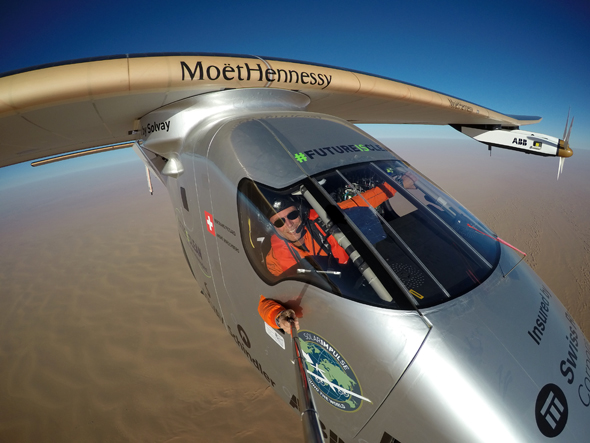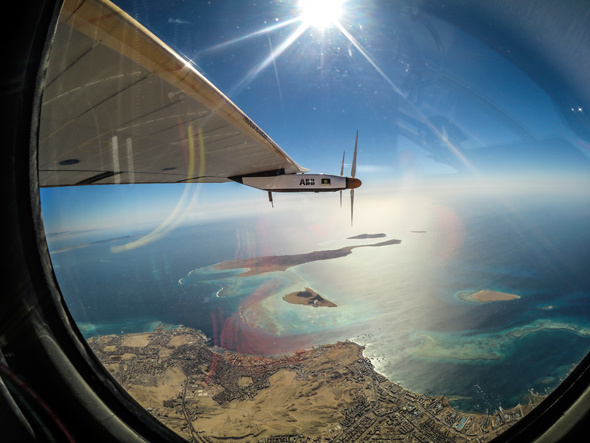Solar Impulse 2 creates history, flies 42,000 km around the world without fuel
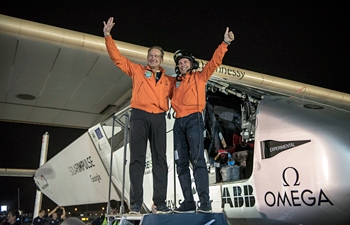

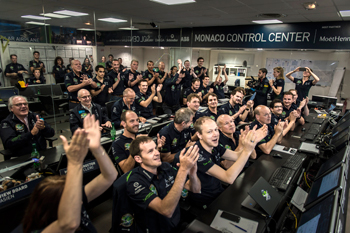
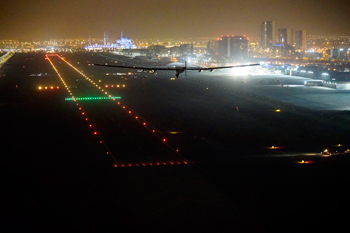

Bertrand Piccard in his Solar Impulse 2 (Si2) landed on July 26th in Abu Dhabi, thus creating history of flight the first round-the-world solar flight ever. Bertrand Piccard made one last smooth landing, kissing the warm tarmac with his solar airplane after a 48 hour and 37 minute flight in Al Bateen Executive Airport, Abu Dhabi. He took off from Cairo, Egypt at 11:28PM on July 24th and landed in Abu Dhabi at 12:05AM on July 26th. The solar airplane has now successfully made it full circle around the world, proving that clean technologies can really achieve the impossible.
UN Secretary General praises
Immediately on landing, the United Nations Secretary General Ban Ki-moon tweeted "You may be ending your journey, but the journey to a sustainable world is just beginning. You are helping to pilot us to that future."
Indeed, it is just the beginning of a new challenge: the clean tech revolution.
Bertrand Piccard and his Swiss compatriot Andre Borschberg took turns flying Solar Impulse, with the mission aiming to promote renewable energy. Bertrand Piccard is a psychiatrist and explorer with his avant-gardist vision and Andre Borschberg is an engineer and entrepreneur with his managerial experience.
Taking turns at the controls of Solar Impulse 2 (Si2) their zero-emission electric and solar airplane, capable of flying day and night without fuel Bertrand Piccard and André Borschberg succeeded in their crazy dream of achieving the first ever round-the-world solar flight. By landing back in Abu Dhabi after a total of 21 days of flight travelled in a 17-leg journey, Si2 has proven that clean technologies can achieve the impossible.
Historic milestone
Beyond this historic milestone, the two Swiss pioneers will continue to urge the global implementation of energy efficient solutions through the creation of the International Committee for Clean Technologies and leverage the expertise and technology gained over the years in Solar Impulse by launching new innovative projects, such as the development of solar powered drones.
It brings to an end a voyage that began in Abu Dhabi on 9 March last year. "The future is clean. The future is you. The future is now. Let's take it further,'' Mr Piccard said, arriving into Abu Dhabi to cheers and applause. The 17-stage journey covered some 42,000km, taking in four continents, three seas and two oceans.
Longest leg of nearly 9,000 km
The longest leg, an 8,924km (5,545-mile) flight from Nagoya in Japan to Hawaii, US, lasted nearly 118 hours and saw Mr Borschberg break the absolute world record for longest (time duration) uninterrupted solo flight. It was just one of 19 official aviation records set during the global adventure.
Solar Impulse has the wingspan of a Boeing 747. It is powered by 17,000 solar cells. The cockpit is about the size of a public telephone box, with the pilots having to wear oxygen tanks to breathe at high altitude and permitted to only sleep for 20 minutes at a time. Yes, they are demonstrating this, all for clean technologies.
The manifesto of Solar Impulse is 'writing the next pages in aviation history with solar energy, and voyaging around the world without fuel or pollution, meeting the public enthusiasm, Solar Impulse is the messenger for Bertrand Piccard's initial vision, written in 2004:
"Our ambition for Solar Impulse is for the worlds of exploration and innovation to make a contribution to the cause of renewable energies. We want to demonstrate the importance of clean technologies for sustainable development; and to place dreams and emotions back at the heart of scientific adventure."
Key Highlights:
- 42,000 km without fuel
- 21 day Odyssey, in 17 stages
- Longest leg 8,924 km flight from Nagoya in Japan to Hawaii, US, lasted nearly 118 hours
